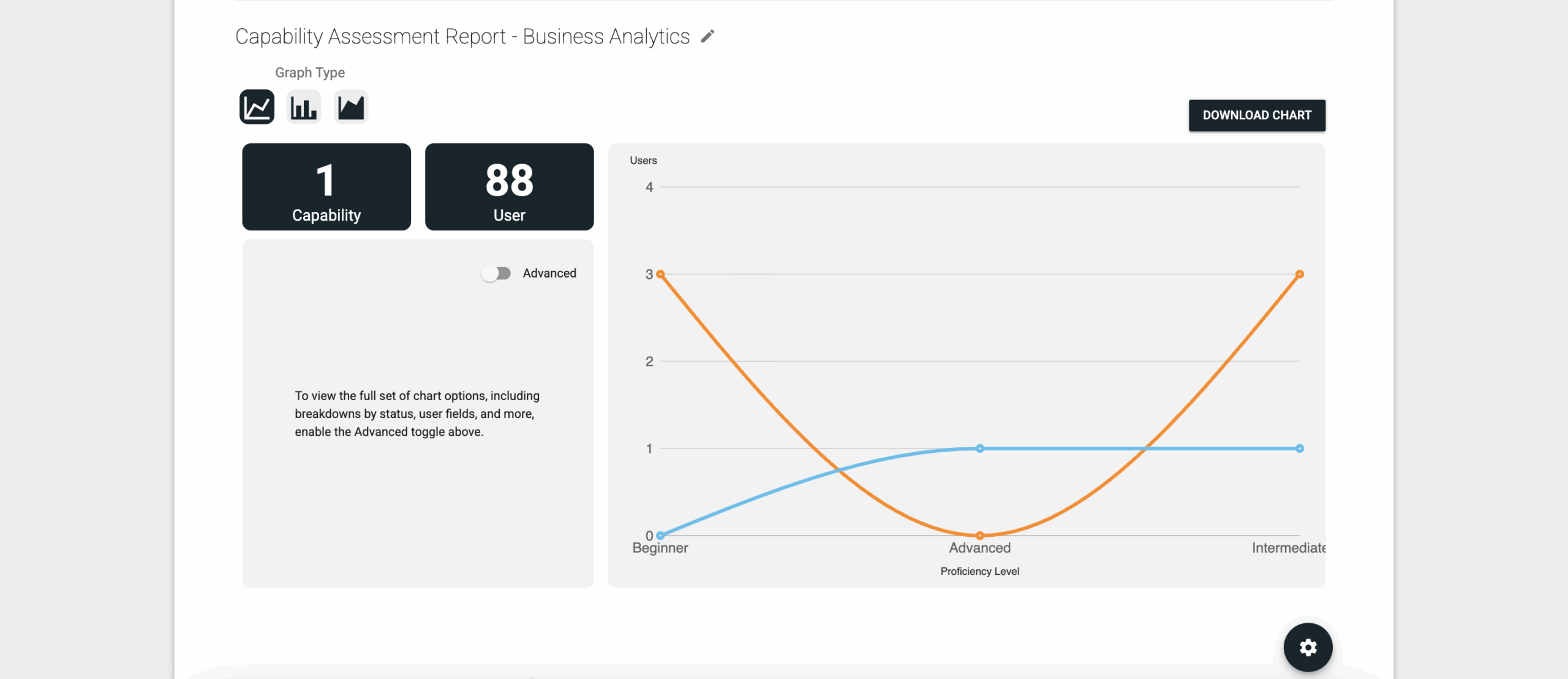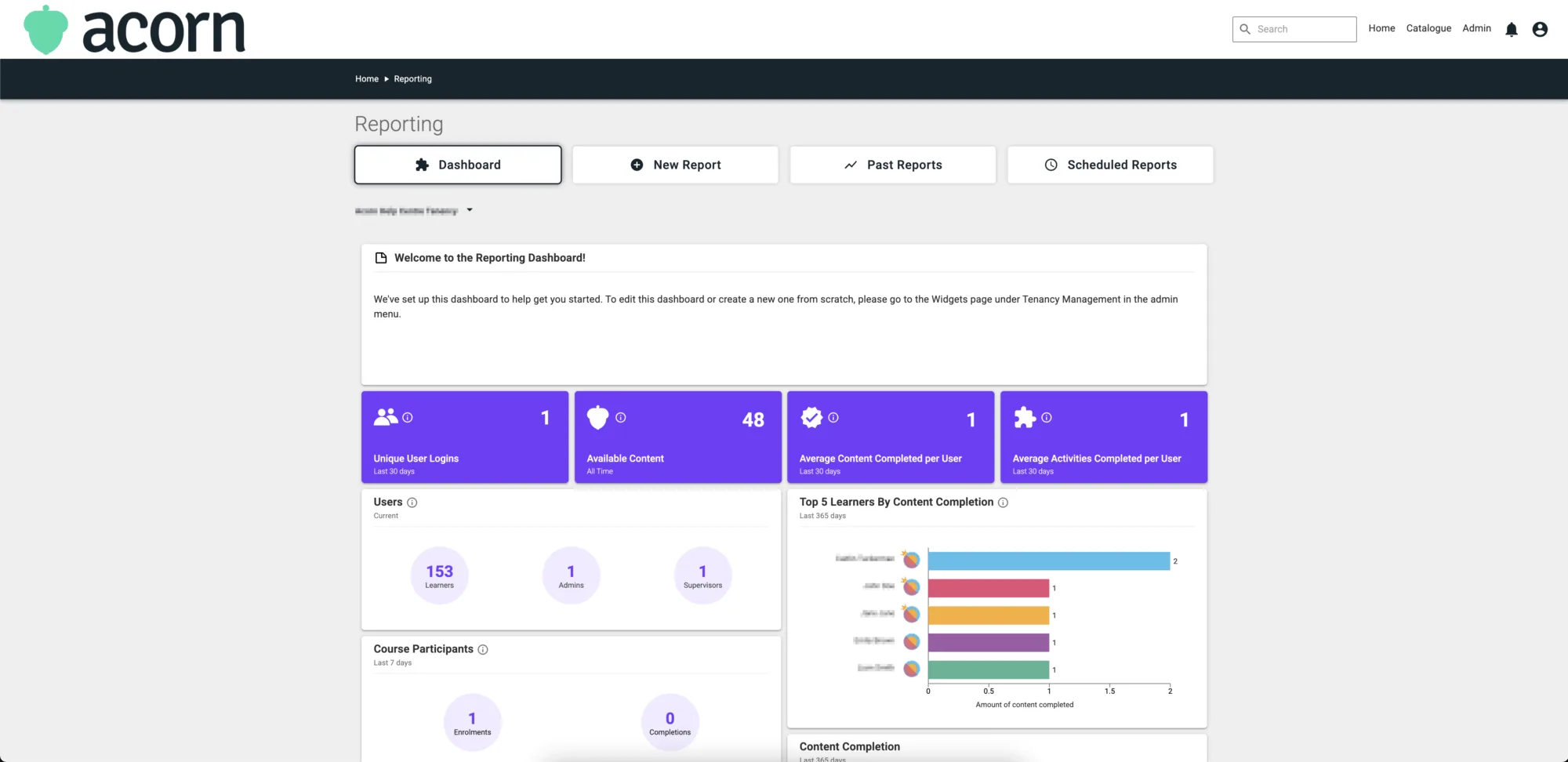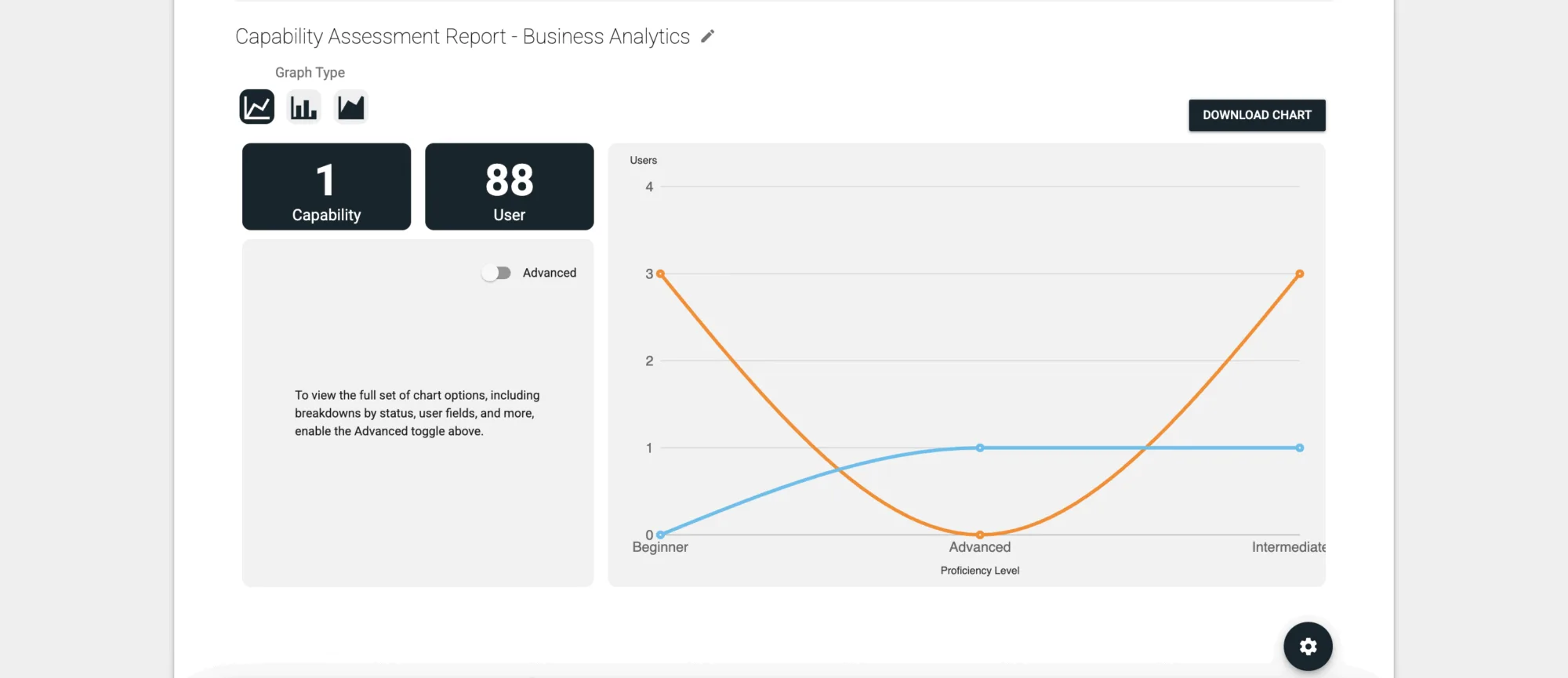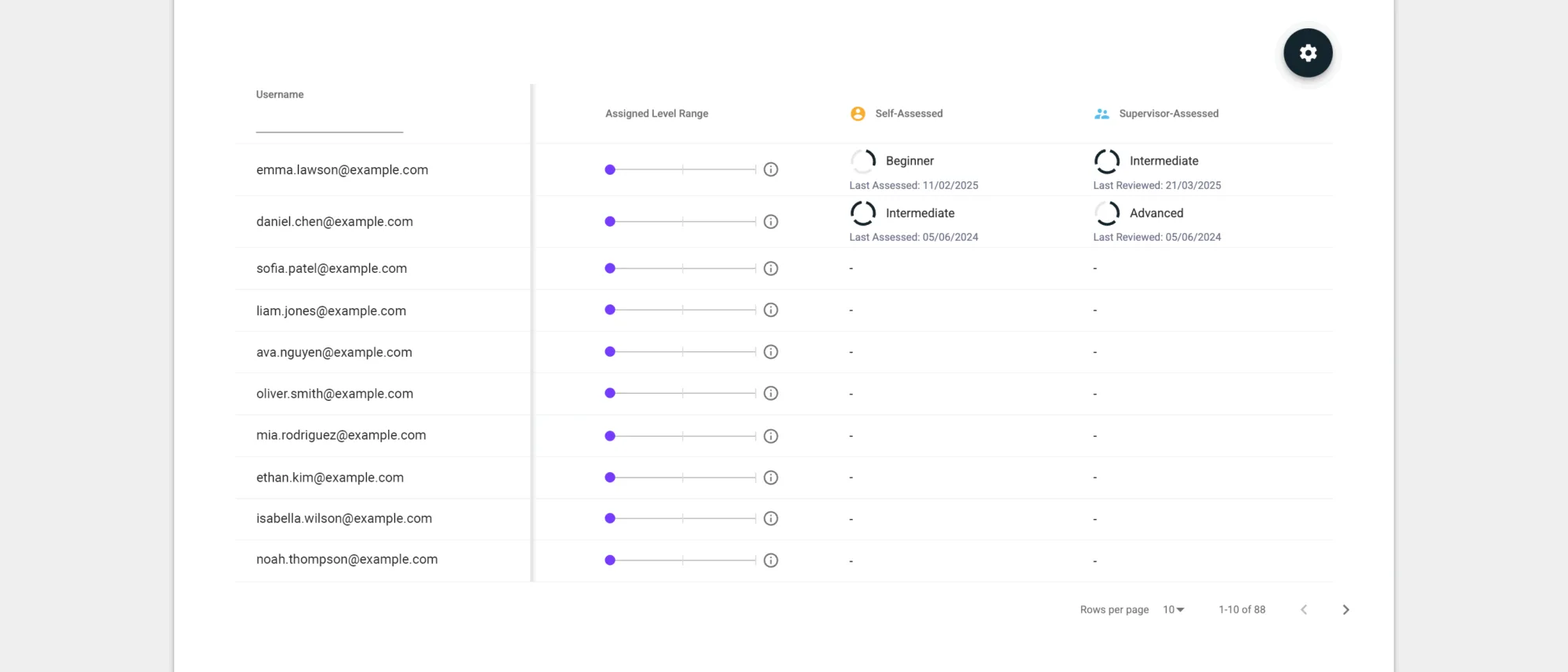How to Read and Action Capability Assessment Reports in Acorn

Find capability gaps across your organization with a capability assessment report
Performance reviews have traditionally been based on opinion and vibes than actual tangible evidence, which is why we’ve moved towards capabilities at Acorn. Capability assessments root performance evaluations in actual performance data (how well employees demonstrate the skills, knowledge, behaviors, and processes they need for their roles), so managers and their direct reports can have constructive conversations.
Of course, looking at individual capability assessments is one thing. Analyzing assessment data at a team or organizational level is another, simply because you’re not just looking at individual development needs—you’re getting a snapshot of capability gaps across the business. In this guide, we’ll walk you through how to run a capability assessment report in Acorn and how to use that to grow your workforce.
What is a capability assessment report?
A capability assessment report shows how people are actually performing against the skills, knowledge, behaviors, processes, and tools their roles require. It’s a snapshot of strengths, gaps, and differences in perception between employees and managers.
Capability assessments make performance conversations constructive because they’re based on actual evidence of performance. That also means it’s easier to set development goals, because you have a clear line of progression from your current baseline to your assigned proficiency level.
And when employees have clear, measurable career goals, they’re four times more likely to engage with the learning to get them there.
Acorn’s Capabilities platform brings together results from capability assessments—self, manager, or peer—and lays them out so you can see where people stand. You’ll see:
- Proficiency levels across each capability (for example, who’s Emerging, Proficient, or Advanced)
- Gaps between self and supervisor ratings (a great conversation starter for 1:1s)
- Who’s completed assessments and where participation is low
- Export options for tracking progress or presenting results.
We use these reports to spot capability gaps, identify coaching opportunities, and feed targeted learning into development plans. Assessments are part of a continuous growth cycle rather than an annual event, because they give managers data to guide their weekly or fortnightly 1:1s with direct reports.
How to run a Capability Assessment Report in Acorn
To generate a gap analysis report using our platform, you’ll first need:
- The Capabilities module switched on
- A connected LMS, not necessarily Acorn
- A capability framework, your own or pulled from our Capability Library.
The ability to generate reports is limited to administrators, supervisors, and reporting officers.
Step 1: Running the capability assessment report
Through your Admin menu, scroll down to Reporting and click Reports. Select New Report from the top of the dashboard and choose Capability Assessment Report from the list.
Select the capability you want to run the report on (noting you can only pick one capability per report) and click Next. You’ll have the option to choose different filters for team, role, or location to uncover patterns across specific groups. If you leave these filters blank, the report will run on all users who have your chosen capability assigned.
Click Next, and the report will generate. It can take longer if there’s a lot of data.

Step 2: Reading the report
The report will be broken into two parts:
- A line graph showing how many users self-assessed themselves at various proficiency levels compared to the number of users who were assessed at each proficiency level by their supervisors.

- A table view of each user and details about their assigned proficiency level, as well as the results of their current self and supervisor assessments (if there is a current assessment).

For users that have completed assessments, you have the option to view their assessments. It will show you a graph comparing that specific users’ self- and supervisor capability assessments, as well as any past assessments that have been completed, so you’ll be able to see how each individual has developed and improved their proficiency over time.
Step 3: Actioning the report
Individual capability assessments show the gap between where users’ capabilities are rated and the level they’re assigned. The report does the same thing, except for a collective group.
Obviously, this doesn’t mean it’s time to break out some one-size-fits-all training. The evidence to back up your proficiency ratings will highlight where each person needs development, and rarely will that be the same area.
But it does mean you can see where there are gaps at an organizational level. If you need your sales team to be proficient in Account Management, but everyone is foundational, then that’s a sign you’ve got a major capability gap that needs to be addressed.
Final thoughts
Capability assessment reporting matters because it gives visibility into capability gaps across your organization, team, or cohort.
You can find more technical how-to resources, explainers, and definitions in our Help Center.